Linda Lombardi
For a long time, the behavior of pet cats and dogs was of little interest to science. Times have certainly changed, but one area that’s somewhat neglected is the question of how and why cats play.
A recent review of the literature published in Applied Animal Behaviour Science sums up the findings and points to directions for future research. While there’s much we still don’t know, there are a number of results we can put into practice to give cats more enriched lives.
Play With Toys
Research into cat play with toys confirms a common observation: it is a lot like hunting. “The patterns of behavior are similar, and the things that entice cats to hunt also get them excited about toys,” says coauthor Mikel Delgado. “What we see from research is that the more similar to realistic prey the toy is, the more of a response the cat shows.”
There’s always going to be the individual cat who likes to play with a ball. But for the most part, the more a toy looks, feels, smells, and moves like prey, the better cats like it. They do have preferences, so it’s best to offer choices: toys that resemble different kinds of prey like mice, birds, bugs, and snakes.
Movement is important as well. After about 21 weeks of age, kittens start to lose interest in things that don’t move. Sure, you can bat a ball with your paw, but it’s not the same.
“They can’t really get lost in the hunting experience like they can when someone else is moving the toy,” says Delgado.
Novelty also matters: cats get bored quickly. In one study, cats presented with the same toy three times became progressively less interested, then showed more response to a new, clean toy that was identical except for color.
The practical takeaway: leaving a bunch of toys lying on the floor all the time isn’t enrichment, because they don’t move, and they don’t change. Owners need to play with their cats: move the toys and remember that they get bored with the same object before they’re bored with play itself.
Why Play?
Although cat play resembles hunting, research doesn’t really support the idea that play is a kind of practice; it doesn’t seem to help cats be better hunters later. “What seems to be most effective for hunting later is exposure to prey. Hunting experience helps you be a better hunter,” says Delgado.
Play does seem to be important to social development, however, which makes it all the more important to understand, given that most of us want sociable cats more than we want mousers.
It’s a common misconception that cats aren’t sociable. “Even cats that are living outside of human homes, free-roaming cats, live socially in colonies together,” say Krystin Vitale of Oregon State University. “They live both socially and solitarily. We see a lot of flexibility.”
Kittens learn to get along with other cats by playing. The first type of play seen in kittens is social, and research shows that kittens who don’t have playmates have difficulty with other cats later. Singleton kittens tend to direct play at their mothers, even though their mothers find this behavior irritating.
“As a cat behavior consultant, I get so many calls from people who can’t understand why the kitten is attacking their legs and hands,” says Delgado. “Kittens who don’t have littermates will direct that behavior toward other beings: their mother, their human, or the poor 12-year-old cat who the person adopted the kitten to be a companion to.”
The takeaway: encourage people to adopt more than one kitten at a time. “When we allow kittens to get adopted without littermates, we’re not recognizing that we’re tearing apart families,” she says. “Social play is very important for kittens and a lack of outlets for social play can be very problematic. Toys don’t fulfill that social need.”
What We Don’t Know
Research into cat behavior lags behind the recent explosion of studies about dogs, partly because they’re harder to study in the lab. “Dogs are used to being in new environments. But a cat that is friendly and playful in a home environment, if you take them to a strange place, they’re going to be terrified,” says Delgado. “So their behavior is not valid beyond that context; it doesn’t tell you anything about how they normally behave.”
Now that we have better technology that lets us study cats in their homes, research is increasing, but many questions remain. For instance, little research has been done on play between adult cats, so right now, science can’t tell you whether your cats are getting along. From her observations, Vitale suggests concentrating on what happens before and after the interaction to distinguish rough play from aggression.
“Before, was there aggressive vocalization? Was their fur already standing on end and were their eyes dilated and were they baring teeth? After, what did they do? Often when it’s play, you’ll see that afterwards they’ll plop down and lay together and start grooming each other. If you see one run off and try to get away that might be more of an indication that it was aggression.”
Social play with humans also hasn’t been well studied, but it may be important to cats. In one study, Vitale tested how cats reacted to a moving toy controlled by a human who was in the room, or one controlled remotely from outside the room. Cats preferred the person moving the toy to be visible, which suggests that kind of play may have a social component.
Delgado also wants to see more research into the process of object play. Prior studies have focused on actual contact with the toy, but for cats, watching and stalking seem important. This makes sense given their natural hunting style. “The way cats hunt is not highly cardiovascular. It’s very cognitive,” she says. “When they play with cats, people tend to concentrate on the cardiovascular aspects and expect backflips and running around, but that’s not really cats’ hunting style.”
Play and Welfare
Delgado says there’s an assumption that play must have a survival benefit. We don’t know for sure if it does, and in fact, research has shown that cats spend a fairly small proportion of the time playing and that it’s not very energetically costly.
But we’re not just concerned about what helps animals survive. We also want to know what helps them thrive.
“I think that one big thing that’s come out of studies about cat play and that this paper shows is that it’s really important for cats to engage in play in order for them to engage in healthy normal behaviors,” says Vitale. “If you’re giving your cat an under-enriched environment with low stimulation, potentially aggression can come out of that, and stereotyped behaviors like overgrooming, that they’re doing because they don’t have anything to engage with.”
One measure of an animal’s welfare is whether they have the opportunity to engage in species-specific behaviors. Owners need to understand what those behaviors are and how to provide the right toys and social situations to “allow cats to behave in the ways that make them cats,” she says. “They need something for all those motor patterns and biologically relevant behaviors to be directed towards.”
This article was reviewed/edited by board-certified veterinary behaviorist Dr. Kenneth Martin and/or veterinary technician specialist in behavior Debbie Martin, LVT.
Linda Lombardi writes about the animals who share our planet and our homes for magazines including The Bark, websites including National Geographic and Mongabay.com, and for the Associated Press. Her most recent book, co-authored with Deirdre Franklin, is The Pit Bull Life: A Dog Lover’s Companion.
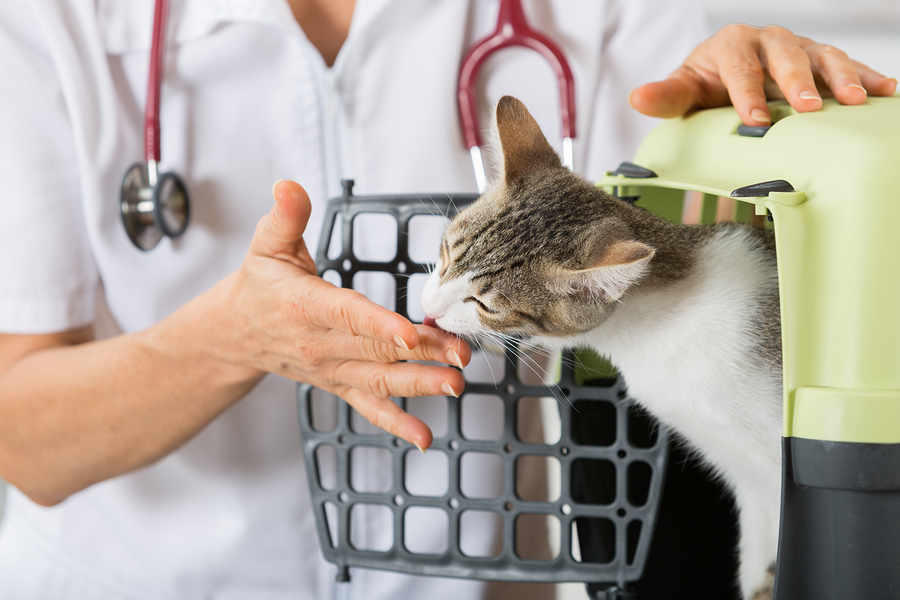
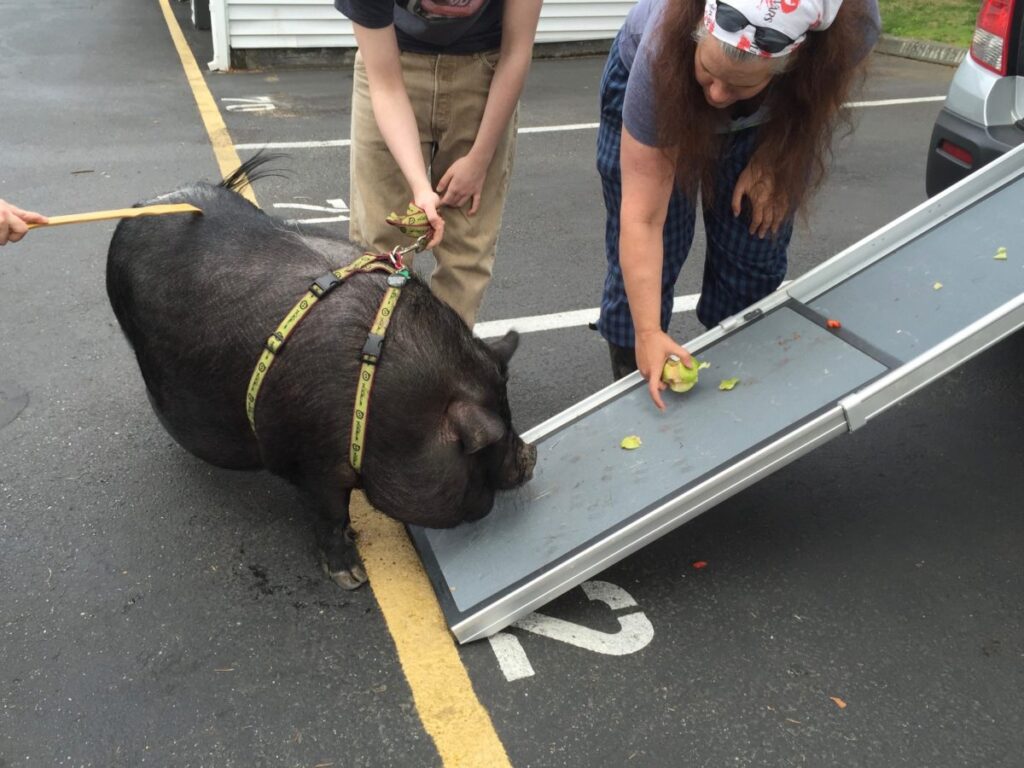
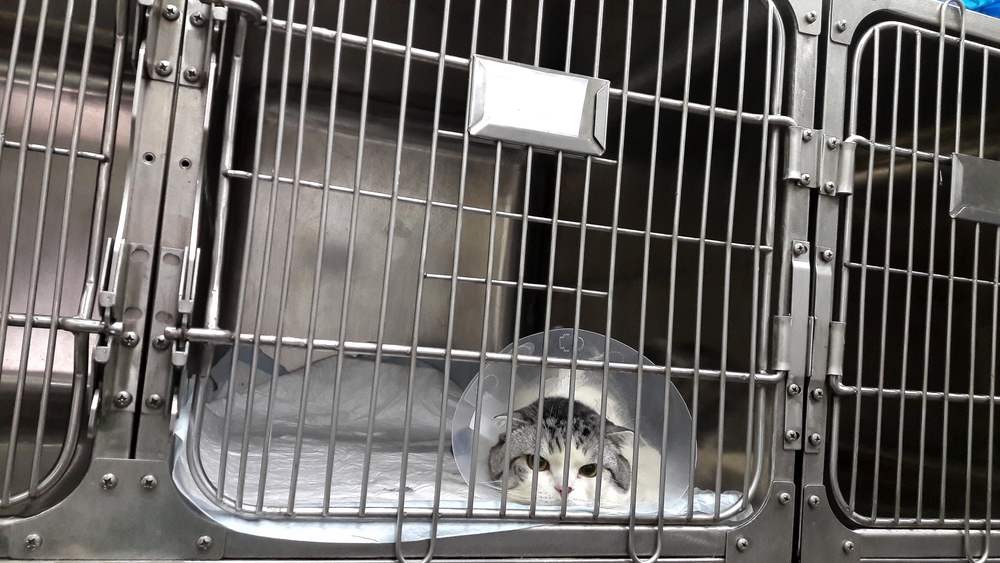
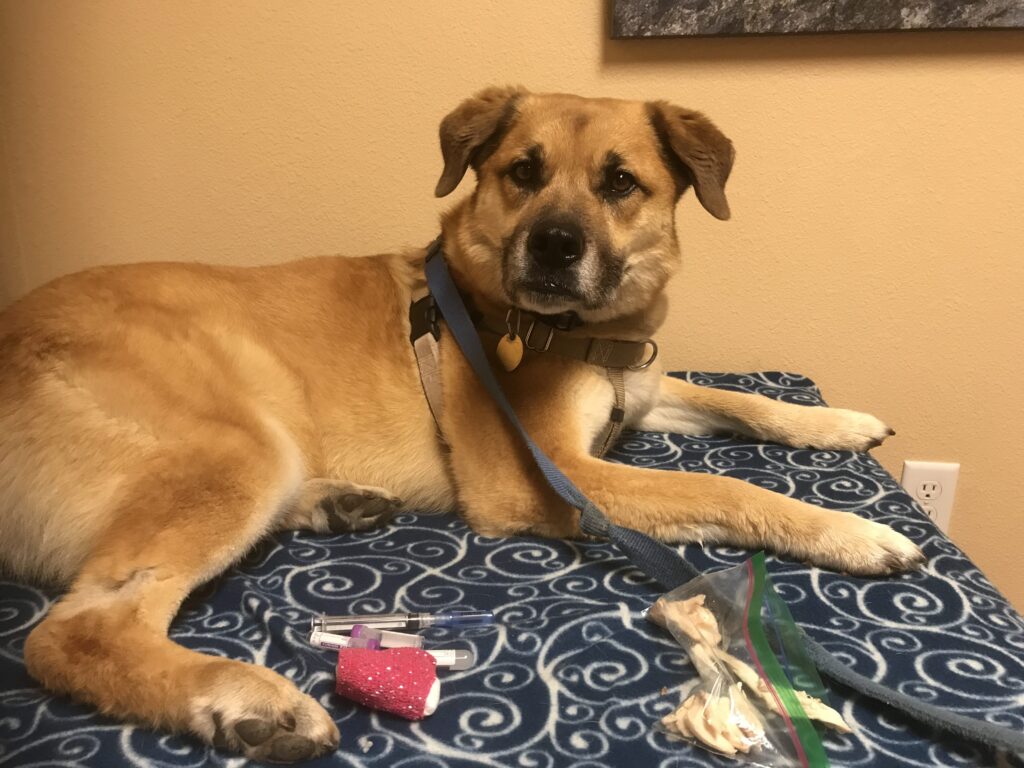
 Hunter, a 2-year-old mixed breed, enjoys looking out the windows in the lobby of our clinic. By starting his visit there, asking his mom questions and listening to his heart and lungs, we can make sure he is comfortable enough to continue his exam in the exam room. But it was a different story when he first came in almost two years ago. Because of a previous frightening experience at another clinic, he was wary of us and the handling and procedures being done. He would bare his teeth, growl, and even try to nip at Dr. Gamble’s hands when she tried to touch him. Through consistent Victory Visits, pre-visit training and medications, and desensitization to areas where vaccines and other needle pokes are typically given, we are now able to provide him and his owner with a comfortable and rewarding experience every time he is in. Now he sits patiently and lets Dr. Gamble examine him—with the help of some cheese and marshmallows, not to mention smears of his favorite treats, peanut butter and canned food. During Hunter’s victory visits, we commonly work on the desensitization process without actually following through with an injection. “Happy visits, along with some training classes and behavior work on our part, have made a world of difference to Hunter,” writes his owner, Beth. “Hunter is now excited to see Emily, Heather, Dr. Gamble, and many other staff members as soon as he walks through the front door. He is a much happier dog at the vet thanks to Gamble Pet Clinic’s Fear Free work.”
Hunter, a 2-year-old mixed breed, enjoys looking out the windows in the lobby of our clinic. By starting his visit there, asking his mom questions and listening to his heart and lungs, we can make sure he is comfortable enough to continue his exam in the exam room. But it was a different story when he first came in almost two years ago. Because of a previous frightening experience at another clinic, he was wary of us and the handling and procedures being done. He would bare his teeth, growl, and even try to nip at Dr. Gamble’s hands when she tried to touch him. Through consistent Victory Visits, pre-visit training and medications, and desensitization to areas where vaccines and other needle pokes are typically given, we are now able to provide him and his owner with a comfortable and rewarding experience every time he is in. Now he sits patiently and lets Dr. Gamble examine him—with the help of some cheese and marshmallows, not to mention smears of his favorite treats, peanut butter and canned food. During Hunter’s victory visits, we commonly work on the desensitization process without actually following through with an injection. “Happy visits, along with some training classes and behavior work on our part, have made a world of difference to Hunter,” writes his owner, Beth. “Hunter is now excited to see Emily, Heather, Dr. Gamble, and many other staff members as soon as he walks through the front door. He is a much happier dog at the vet thanks to Gamble Pet Clinic’s Fear Free work.” Recently, there was an event called Woof Fest held during a downtown pub crawl. Our clinic sponsored “Dog Trivia,” and I focused the questions on a pet’s emotional health, such as “Is this dog’s body language calm or stressed?” and “A dog wagging their tail is always happy. True or False?” Hundreds of people played our trivia game, and it was such a rewarding experience to educate the public on the topic.
Recently, there was an event called Woof Fest held during a downtown pub crawl. Our clinic sponsored “Dog Trivia,” and I focused the questions on a pet’s emotional health, such as “Is this dog’s body language calm or stressed?” and “A dog wagging their tail is always happy. True or False?” Hundreds of people played our trivia game, and it was such a rewarding experience to educate the public on the topic. Sammy had grown up in a hoarding situation and was fearful at the time of his adoption. Unless he was sedated, the six-year-old dog would bark and lunge or even eliminate from fear during veterinary visits. A prescription for an SSRI helped and the team tried additional medications at different doses, but Sammy would push through the medications and continue to show fear aggression. At first, he was unable to generalize that humans weren’t scary, so it was important for him to see the same person at the hospital on each visit. That wasn’t easy, but eventually the right person came along who was able to take the time and effort for Sammy to become comfortable. It took six months of Victory Visits spent eating chicken, practicing chin rests and lying on his side, and undergoing desensitization to having his leg shaved, the scent of alcohol, application of a topical product for numbness, and the pretend poke of a needle, but in July Sammy underwent his first successful blood draw. Now we are routinely doing happy visits to keep the momentum going.
Sammy had grown up in a hoarding situation and was fearful at the time of his adoption. Unless he was sedated, the six-year-old dog would bark and lunge or even eliminate from fear during veterinary visits. A prescription for an SSRI helped and the team tried additional medications at different doses, but Sammy would push through the medications and continue to show fear aggression. At first, he was unable to generalize that humans weren’t scary, so it was important for him to see the same person at the hospital on each visit. That wasn’t easy, but eventually the right person came along who was able to take the time and effort for Sammy to become comfortable. It took six months of Victory Visits spent eating chicken, practicing chin rests and lying on his side, and undergoing desensitization to having his leg shaved, the scent of alcohol, application of a topical product for numbness, and the pretend poke of a needle, but in July Sammy underwent his first successful blood draw. Now we are routinely doing happy visits to keep the momentum going. Bruno is a goofy 8-year-old Bull Arab Cross (a type of Australian working dog). He has always been very friendly at the vet, but once pats stopped and the examination started, he would become suspicious and communicate his discomfort with aggressive behavior. Fortunately, Bruno’s owner has been committed to training. They had private training sessions and attended a Ready, Vet, Go! course. As part of Bruno’s training we incorporated a lot of owner education on subtle body language changes, as well as start and stop cues for Bruno. Bruno was trained with a sustained chin target, using a towel on a chair, as his start cue, meaning “I’m ready for procedure.” If he lifted his head, we immediately stopped the procedure. Bruno was also trained to be comfortable with a Baskerville Ultra Muzzle. We spent time teaching Bruno specific body parts such as tail, ear, and scruff, so that he knew what was about to happen. Over time we were able to pair several good vet clinic experiences (training on a Sunday in clinic) with lots of his fave foods, body scratches, and games. We also introduced veterinary equipment, including syringes, blunt needle, alcohol swabs, and stethoscope. When we weren’t actively training, he was taught a default “chill” behavior and rewarded for relaxed head, tail, and big breaths. He had several socialization visits at the vet, and when he required surgery for a lump removal we did practice runs with pre-visit medication to see what would work best for him. A planned course of action on admission saw him anesthetized as soon as possible to limit buildup of anxiety. Since then Bruno has had further training sessions and socializing vet visits. Recently he had his vaccinations and we were able to give his injection without any restraint by utilizing his muzzle and target training. Bruno is a great example of what teamwork can achieve when you have a committed owner and a Fear Free-trained vet and trainer, not to mention a goofy, food-motivated dog!
Bruno is a goofy 8-year-old Bull Arab Cross (a type of Australian working dog). He has always been very friendly at the vet, but once pats stopped and the examination started, he would become suspicious and communicate his discomfort with aggressive behavior. Fortunately, Bruno’s owner has been committed to training. They had private training sessions and attended a Ready, Vet, Go! course. As part of Bruno’s training we incorporated a lot of owner education on subtle body language changes, as well as start and stop cues for Bruno. Bruno was trained with a sustained chin target, using a towel on a chair, as his start cue, meaning “I’m ready for procedure.” If he lifted his head, we immediately stopped the procedure. Bruno was also trained to be comfortable with a Baskerville Ultra Muzzle. We spent time teaching Bruno specific body parts such as tail, ear, and scruff, so that he knew what was about to happen. Over time we were able to pair several good vet clinic experiences (training on a Sunday in clinic) with lots of his fave foods, body scratches, and games. We also introduced veterinary equipment, including syringes, blunt needle, alcohol swabs, and stethoscope. When we weren’t actively training, he was taught a default “chill” behavior and rewarded for relaxed head, tail, and big breaths. He had several socialization visits at the vet, and when he required surgery for a lump removal we did practice runs with pre-visit medication to see what would work best for him. A planned course of action on admission saw him anesthetized as soon as possible to limit buildup of anxiety. Since then Bruno has had further training sessions and socializing vet visits. Recently he had his vaccinations and we were able to give his injection without any restraint by utilizing his muzzle and target training. Bruno is a great example of what teamwork can achieve when you have a committed owner and a Fear Free-trained vet and trainer, not to mention a goofy, food-motivated dog!

 As for black cats, Campbell says giving clever names to adoption campaigns works. The shelter has been successful with its “Desperate House Cats Looking for Homes” (a play on the popular television shows named Desperate Housewives) and “Pick Your Price” (a play on long-running game show The Price Is Right). Adopters often receive a free bag of cat food and qualify for a free veterinary visit. Black kittens and cats up for adoption often sport pastel-colored collars to help them stand out.
As for black cats, Campbell says giving clever names to adoption campaigns works. The shelter has been successful with its “Desperate House Cats Looking for Homes” (a play on the popular television shows named Desperate Housewives) and “Pick Your Price” (a play on long-running game show The Price Is Right). Adopters often receive a free bag of cat food and qualify for a free veterinary visit. Black kittens and cats up for adoption often sport pastel-colored collars to help them stand out.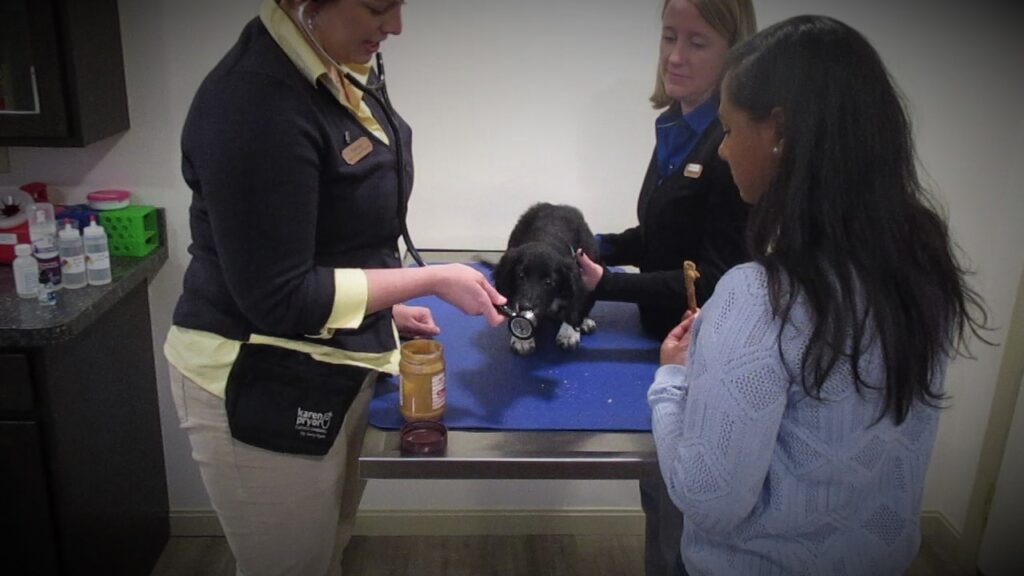
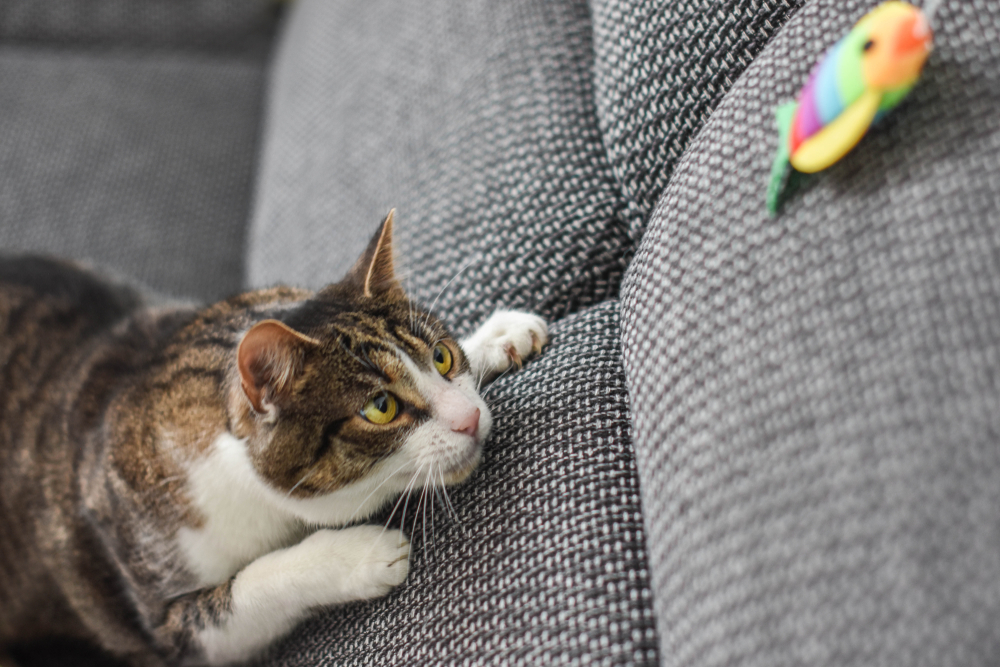
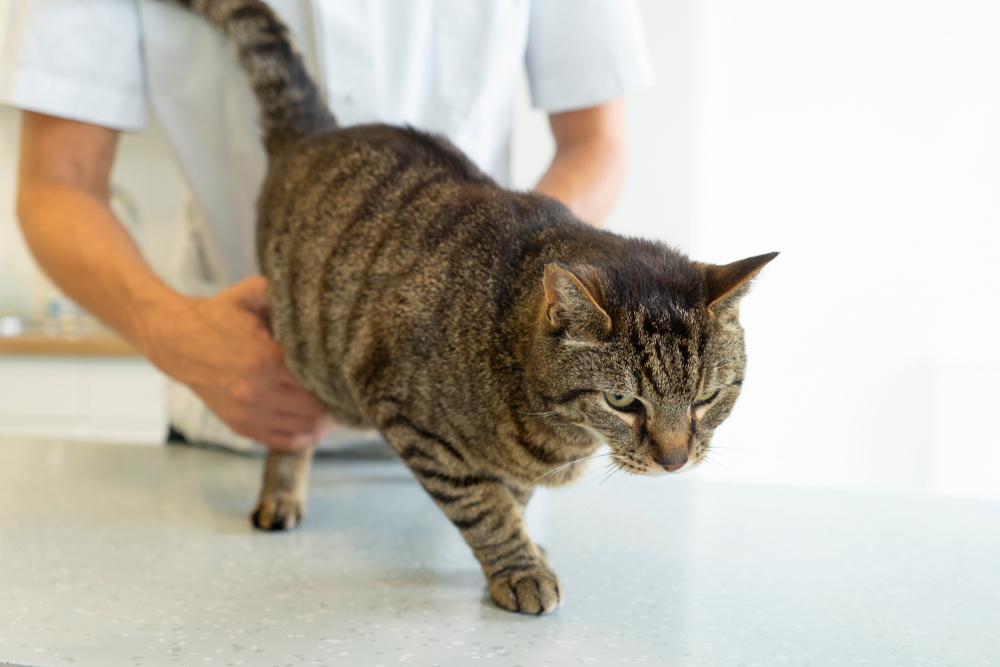

 This post is brought to you by our sponsor, Elanco, the makers of
This post is brought to you by our sponsor, Elanco, the makers of